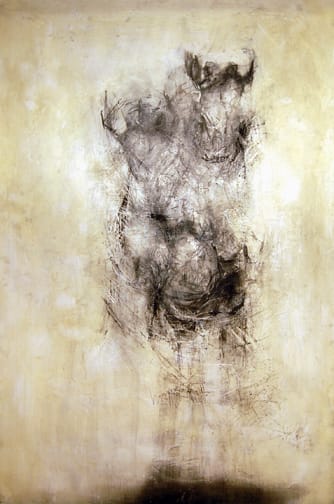THE BERKSHIRE EAGLE
What could be simpler than 'Black/White'?

By Charles Bonenti
Art Review Berkshire Eagle Staff STOCKBRIDGE—What could be simpler? Put four artists in a gallery and call what they do "Black/White" Yet when one is a sculptor, another a painter, the third a photographer and the fourth a printmaker well, you start to see the complications. Still, the exhibition of recent work by Denny Alsop, Marilyn Kalish, Clemens Kalischer and Joe Wheaton at Kalischer's Image Gallery through Feb. 28, comes off—in an improbable, quirky sort of way. That's because each of the above—beyond working in black and white—also builds his or her compositions mostly through lines and patterns. So, Wheaton's metal sculptures— geometric arrays of spears, disks and quadrangles—comfortably inhabit the gallery with Kalischer's pictures of fallen leaves, bare tree branches and rusticating bricks; Alsop's lithographs of grids, loops and beaded lines; and Kalish's charcoal and ink portrait and figure drawings.
It is the drawings I found most arresting. Rich, complex and tightly woven, Kalish's energetic patterns of lines and shadings take on a physical presence that thrusts itself off the paper. One big portrait in particular, more the suggestion of a head and torso than an actual resemblance to anyone, barely contains the explosive energy of its frenzied linework within the confines of the picture space. Wheaton's sculptures, grouped together against a white wall, form an ensemble of lines and shapes that is surprising complete, given that each is, in fact, a separate artwork. One sculpture leads the eye effortlessly into the next, the whole group showing a unity of balance, harmony and progression. The show is not without its faults, mostly ones of editing. Alsop's lithographs are displayed apart from the others in a small alcove near the gallery entrance, giving them kind of an orphan status when it would have been logical—for comparison's sake—to hang at least one in the main exhibition room. Still, the exhibition shows how it is possible for artists to arrive at harmonious solutions to similar problems even while traveling very different paths.